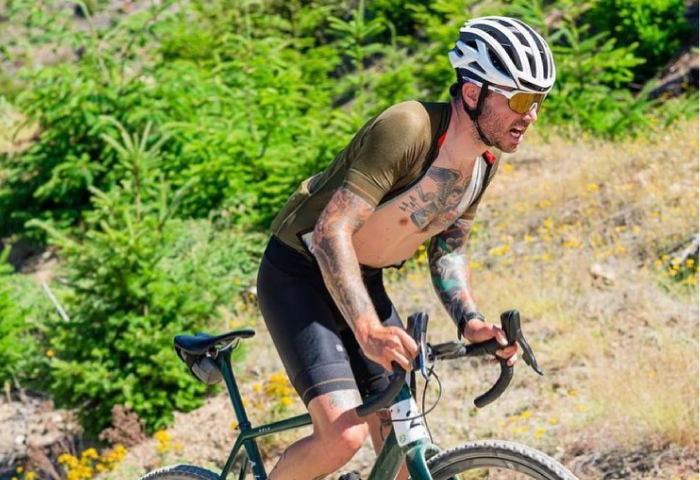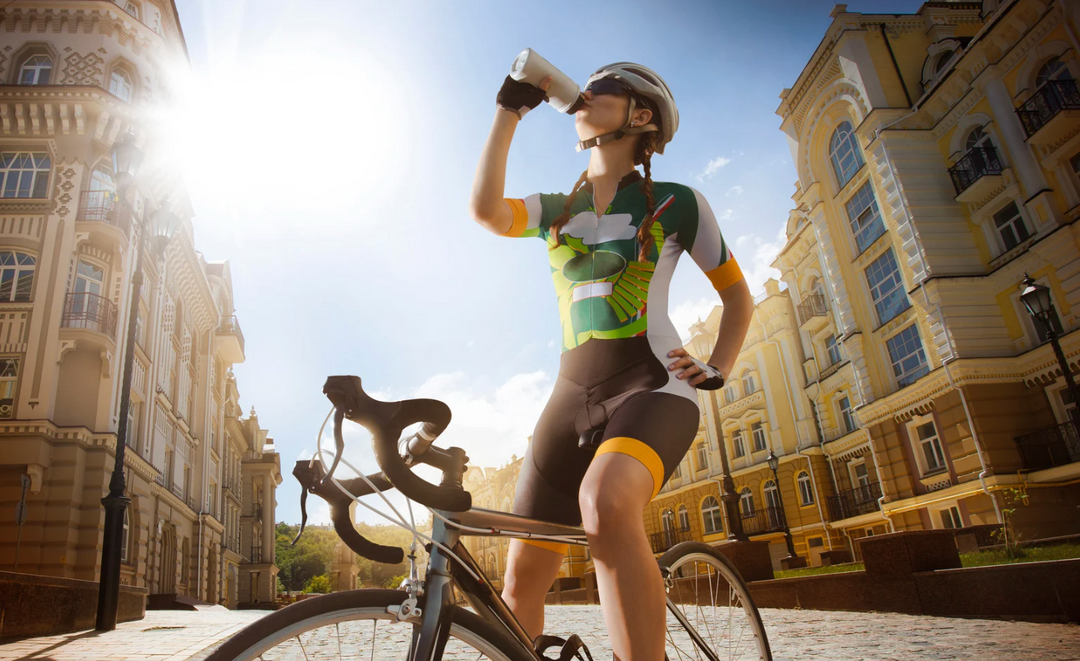#TheWerk - Five Key Bike Power Metrics
Today's #TheWerk post is brought to you by Jason Lentzke (@jlentzke). A former pro triathlete from Milwaukee, WI, Jason now lives in Phoenix, AZ where he has built Toro Performance, a thriving endurance sports coaching practice. Understanding that athletes' time is their most precious commodity, he centers his coaching practice on helping clients integrate training into their already busy lives.
--------------------------

Regardless of the race distance, an athlete will feel the effects of limited cycling training within their run performance. As events get longer or more intense, the lack of durability across all three sports will emerge sooner.
By utilizing these five key bike metrics, an athlete can enhance multisport durability and improve their triathlon run performance.
Functional Threshold Power - What is it?Your highest sustainable power output for 60 minutes, functional threshold power (FTP) is your north star when it comes to power-based training. How to get it? The “easiest” way is a 20-minute all-out time-trial effort. Multiply that average power for that interval by .95 to determine your FTP. Be sure you are indoors or on a flat, uninterrupted stretch of road that you can use frequently.
This metric will allow for effective workouts based on percentage of FTP. This is critical for hard rides AND just as key for easy rides.
Average vs. Normalized Power (NP) & Variability Index (VI)Two rides may have the same average power but they may have been totally different in terms of dynamics. Coasting and surging vs. steady state riding affects your NP and VI. That’s why normalized power is a more accurate representation of how physiologically demanding your ride was. Your NP also tells us the metabolic cost (how much energy) of your ride.
For long, steady state efforts like an Ironman triathlon, you want to minimize surges that will impact your run legs. Keep a lid on your enthusiasm by monitoring Variability Index (VI), which is nothing more than normalized power divided by average power. Long course triathletes want to target a VI of 1.05 or lower in order to set yourself up for the best run. Large spikes in power will increase your VI and cause a much faster burn rate of glycogen, creating fatigue faster.

Training Stress Score (TSS) & Intensity Factor (IF)
Training Stress Score is a way of using a number to tell us how hard a ride was. It’s based on the interplay of intensity (power) and duration (time). A beginner cyclist might do 5 rides @ 50 TSS for a weekly TSS score of 250. A grand tour rider may put out up to 3000 TSS in a week. The formula is…
TSS = IF2 x bike time (in hours) x 100
Riding @ FTP for 60 min = 100 TSS.
By utilizing TSS, we can quantify your weekly and monthly training load as TSS allows you to identify specific stress rather than focusing on much less precise metrics like time or distance.
No matter the length of your triathlon, your bike leg is always the longest segment and your output will always affect your running ability. Preparing your body to tolerate the specific demands of your ride is exactly why a coach utilizes TSS score to dictate training load.
An Ironman bike leg will typically demand approximately 250 to 300 TSS (you can approximate yours by using your FTP, IF and estimated finish time), giving you a target for a specific training stimulus to plan for. Initially this can be a low intensity long duration ride, and evolve to more closely mimic race intensity and duration as the training progresses.
That brings us to Intensity Factor (IF) which is critical as it relates to running faster off the bike. Here’s the formula.
IF = Normalized Power (NP) ÷ Functional Threshold Power (FTP)
IF lets you focus on what you’re doing with those hours on the bike, especially as your training relates to a particular event. Professional Ironman athletes, typically ride at an IF of .78 to .82. This means that they ride at 78 to 82 percent of their FTP. To put it another way, for four and a half to five hours, the pro athletes hold 78 to 82 percent of the effort they can hold for one hour.
Age group athletes should probably aim for an IF of .65 to .75 in order to set themselves up for a strong run. Using this number you can do some simple math to obtain a goal wattage for the bike. For instance, if your FTP is 250 watts, simply multiply that by .70 and you have 175, or your goal wattage for a moderate to aggressive bike ride. If it is your first Ironman or you are not a strong runner, lower your IF to .65. Having this number can help you pace your entire ride, especially in the first miles when it’s easy to get caught up in the excitement of race day.

Kilojoules
Kjs, as they’re called for short, is the measurement of work you’ve done on the bike. By a happy accident of nature and thermoregulation, kJs are essentially equal to calories. Power meters capture that data very accurately as opposed to heart rate monitors and activity trackers that use estimates/algorithms that are typically way off. Additionally, one TSS point equates to roughly 10 kilojoules, so TSS can also be a relevant tool pertaining to fueling demands.
Riding to a prescribed kj expenditure will help prepare your for the demands of race day. Click here to learn how. Additionally, if you’re riding to lose or maintain weight, monitoring your kJ expenditure can help you meet your weekly calorie loss goals.
Watts Per Kilogram (W/Kg)
Many wonder how many watts professional Ironman athletes hold during the bike leg of an event. With applications like Strava allowing professionals to be more transparent with their training and racing, we can clearly see how hard they ride. However, since an athlete’s weights can vary, total wattage alone is not the best benchmark of fitness.
If two athletes are riding at 350w, but one weighs 70kg and the other weighs 80kg, their speeds will be different. A more accurate benchmark of speed/fitness is watts per kilogram, or w/kg. This is really where the top athletes distinguish themselves from mortals. A top pro male Ironman athlete will likely ride 112 miles @ 3.8 - 4.2 w/kg. Professional women typically ride @ 3.2-3.7 w/kg.
By pivoting the focus of your bike volume from distance/time to kJ and w/kg, you can much more precisely plan your training to meet or exceed the physiological demand of racing in training and race to your best ability.
Want to run your best marathon off of the bike? Train with purpose by incorporating more specificity on the bike and do not forget to practice fueling at that intensity.

Bottom Line
Durability is the biggest limiter to triathlon run speed. Additional run mileage is not the secret to a successful triathlon run performance. In fact, in-season weekly run mileage should never really be more than 1/5 of your bike mileage.
Athletes looking to run faster off the bike need to run the right type of volume to build appropriate multi-sport resilience and durability. By utilizing a power meter in training and racing you will become a stronger, more enlightened rider and most importantly, run to your best ability off the bike.
--------------------------
As a coach, Jason works with triathletes, cyclists, runners and endurance athletes of all skill levels. He has guided beginners to their first IRONMAN finish line, professional triathletes to the podium, cyclists (criterium, road, MTB & gravel), marathoners, ultra runners and virtually every skill level in between. As a life-long student of endurance sport, Jason shares a passion and commitment to excellence... be that with his athletes or in his life as a husband (Coralie) and father (Juliette). For more information on Jason or Toro Performance, please contact him at jlentzke@me.com or give him a follow on Instagram at @jlentzke.







Leave a comment